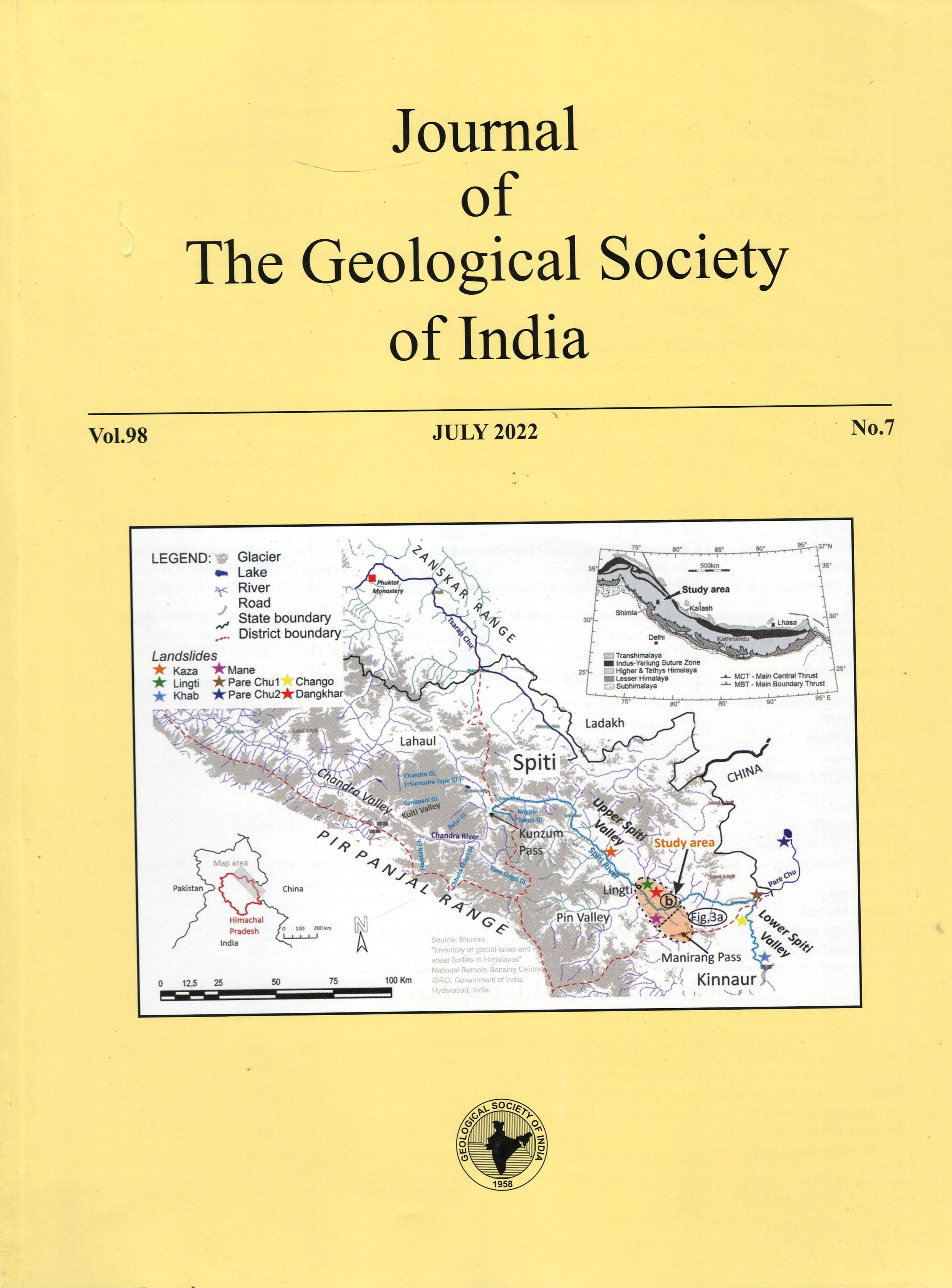Channel Migration Detection and Landuse/Landcover Changes for Barak River in Northeast India
DOI:
https://doi.org/10.1007/s12594-022-2104-0Keywords:
No KeywordsAbstract
In northeast India, Barak river is among one of the principal rivers, which is highly meandering in nature in its flood plain area. For infrastructural development and river protection works, it is essential to know the behavior of banklines shifting on landuse and landcover changes. This study is to evaluate the impact of bank lines shifting on land use and land cover changes. In order to fulfill the purpose of the present study 12 reaches with 41 cross-sections have been selected. The whole work has been done with the help of RS and GIS techniques using Landsat images and hybrid classification for the landuse and landcover classification. The result of the study shows that in the upper reach of the alluvial plain, there is an active shifting. Also, it is observed that at the lower reach, the river has moved in both north and south direction. It is observed that maximum migration rate is 130.2 m/year with a mean migration rate (9.43 m/year). The sinuosity estimated for the same reach with 12 bends is in the range 1.24–3.89. Among all the sections, the minimum and maximum changes of width are 0.26m and 249.93m respectively with an average value of 84.51m. It is found that the Barak river can be classified into sinuous channel (1.05 to 1.5), as well as meandering channel (>1.5). The investigation of changes in the pattern of land use land cover (LULC) of the Barak basin over 33 year’s period (1984–2017) shows that urban/built-up and agricultural land was increased gradually, e.g., urban increased by 40.6% for 1984–1992, 72.14% for 2002–2012, 180.15% for 1984–2017. While, agricultural land increased by 18.9% for 1984–1992, 41.15% for 1992–2002 and 93.20% for 1984–2017. In addition water bodies increased by 19% and 41.73% from 1984–1992 and 1984–2017 respectively. In contrast, dense vegetation decreased by 5.6% for 1984–1992 and 21.77% for 2002–2012 and 39.14% for 1984–2017. Open vegetation showed a decreasing trend by 11.1% for 1984–1992, 26.83% for 1992–2002, and 36.27% for 1984–2017. Rapid population growth, migration of rural people to urban, unawareness of biophysical limitations and poverty are some of the probable reasons behind the changes in the LULC. The results of the hybrid classification of the LULC of the Barak River for the Landsat 1(1984; MSS), Landsat 2 (1992; TM), Landsat 5 (2002; TM), Landsat 7(2012; ETM+) and Landsat 8(2017; OLI) showed overall classification accuracy of 90.83%, 86.67%, 90.56%, 93.33% and 86.11% with overall kappa statistics of 0.8900, 0.8400, 0.8867, 0.9200 and 0.8333 respectively. The channel migration directly affects the land use and land use change and has direct effect on the flood plain dwellers of the study area. All the assessments of this study highlight a significant message of immense vulnerability of the Barak river and also provide news about geomorpho-logical instabilities of the study area

 Wajahat Annayat
Wajahat Annayat






